Digital Tip: Exposure Part II — Shutter Speed
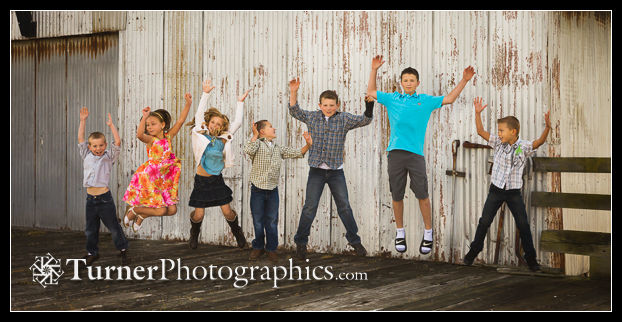
Last month I introduced the three things you can control on your camera that affect exposure: ISO, shutter speed, and aperture. I explained how changing the ISO setting changes the sensitivity of your camera’s sensor. If you missed it, or need a review, read about ISO here.
Shutter speed is this month’s topic. Choosing an appropriate shutter speed for your subject is a creative choice as well as being one of the variables that affect exposure. All cameras have a hole inside the lens that, when open, lets light hit the sensor (or film). The shutter controls how long the hole is open.
When the shutter is open for a very short time you are able to stop motion and freeze action. Conversely, a long exposure can blur a moving subject. If you’re hand-holding your camera you need to choose a shutter speed that is short enough to compensate for any movement of the camera in your hands. The longer the focal length of your lens the shorter the shutter speed needs to be to avoid camera shake.
Stopping Action
You’ll need a shutter speed of at least 1/500 second to freeze most sports action. That’s enough to capture a basketball player in motion. But to freeze a fast-moving baseball you may need 1/2000.
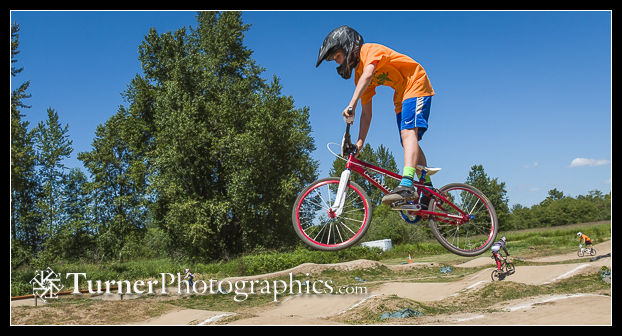
In this photo of BMX racing, I used a shutter speed of 1/2000 to freeze the action of the rider as he caught some air on one of the jumps. Examined closely, there’s still a little bit of blur in the front tire as it rotates. Action going side to side in the frame requires a faster shutter speed than action coming toward the camera.

To photograph these motorcycle riders on Chuckanut Drive I rode in the back of my truck and had the riders follow at a constant distance. I set my shutter for 1/1600 to freeze the action. With subjects coming toward the camera you can use a relatively slower shutter speed and still stop the action but I didn’t want to take any chances with this photo.
Blurring Movement
Slow shutter speeds allow you to show the passage of time in a single frame. Think star trails, silky waterfalls, and headlight streaks. Any time you’re using a long exposure it’s critical that you mount your camera on a tripod or set it on something sturdy.
I use long exposures much more often than I use fast shutter speeds in my photography. I like the effect of blurred movement. I also use slower shutter speeds when light levels are low and I also want a small aperture and low ISO.
![1109065 Star trails framed by Gray Pines [Pinus sabiniana]. CA Rt 299, Junction City, CA. © Mark Turner Star trails](/wp-content/uploads/2014/11/Turner_1109065.jpg)
Star trails framed by forest trees, exposed for over 5 minutes
I don’t often use exposures as long as 320 seconds (5 minutes 20 seconds) but that’s what gave me these star trails. Notice that the motion of the thin clouds and the trees at the edge of the frame are also blurred. When photographing star trails it’s better to frame the sky with a foreground that isn’t also moving.
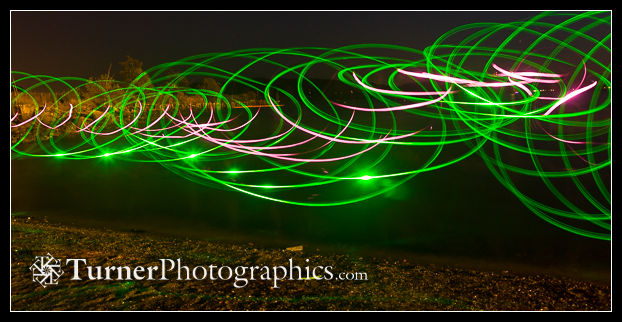
Light painting with twirling gelled LED flashlights, 30-second exposure
This light painting was done in a 30-second exposure. It’s a person twirling an LED flashlight (with a green gel over the light) as he moved across the frame. Because the person holding the glow stick was wearing black and constantly in motion he doesn’t show up in the photo.
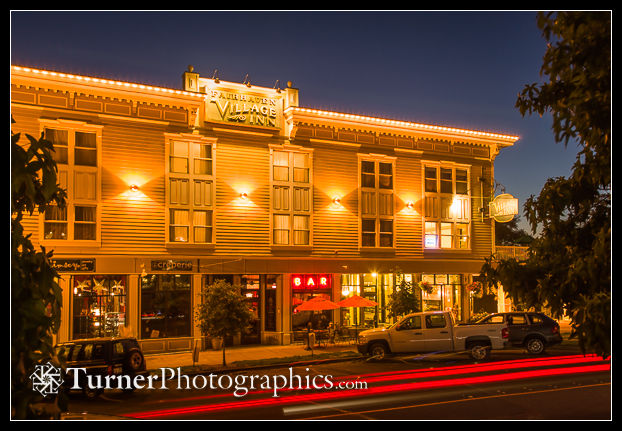
Fairhaven Village Inn exterior, night exposure of 5 seconds
Five seconds was enough time to render the moving car tail lights as continuous stripes of red in this night-time view of the Fairhaven Village Inn. I waited patiently for a car to drive down the street and tripped the shutter just when I could see the red lights enter the frame.
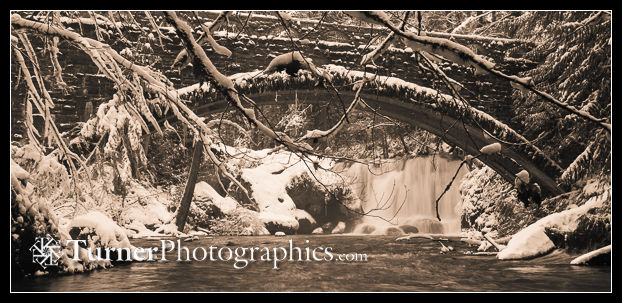
Whatcom Falls, exposed at 1/4 second
Waterfalls get a nice silky look at exposures of ¼ second or slower. I think the sweet spot is ¼ to ½ second. Anything shorter doesn’t give quite enough blur and 1 second or longer gives more blur than I like.
Compensating for Camera Shake
For everyday, walk-around, hand-held photography when you’re not using your shutter for creative effect you just need to make sure the shutter speed is fast enough to stop the movement of the camera in your hands. For most people, the rule of thumb is 1/lens focal length.
That means if you’re using a 50mm lens you need a shutter speed of 1/60 or faster. With a 200mm telephoto lens you need at least 1/250. You could hold a 24mm wide angle lens steady at 1/30. Some photographers, with good technique, can hand hold at slower speeds. Image stabilization can give you up to two stops more, so you could hand hold a 50mm lens at 1/15 instead of 1/60.
Standard Shutter Speeds
The standard series of shutter speeds on most cameras is:
1 • 2 • 4 • 8 • 15 • 30 • 60 • 125 • 250 • 500 • 1000 • 2000 • 4000
Those are actually the denominators of fractions 1/1, ½, ¼, 1/8, 1/15, 1/30, etc. Your camera may not have all of those, and it may have exposures longer than one second as well. A shutter speed of 1/125 lets in twice as much light as 1/250. Conversely, 1/60 lets in half as much light as 1/30. Just remember that every full-stop notch on the exposure dial changes the amount of light reaching the sensor by a factor of two.
Many modern digital cameras have intermediate shutter speeds, at ½ or 1/3 stop intervals for more precise control over exposure.
Remember, shutter speed is just one of three variables that affect photographic exposure. Choose shutter speed first if the most important factor is controlling how you capture motion, either to stop it or deliberately blur it.
Next month I’ll discuss the third variable, aperture.

